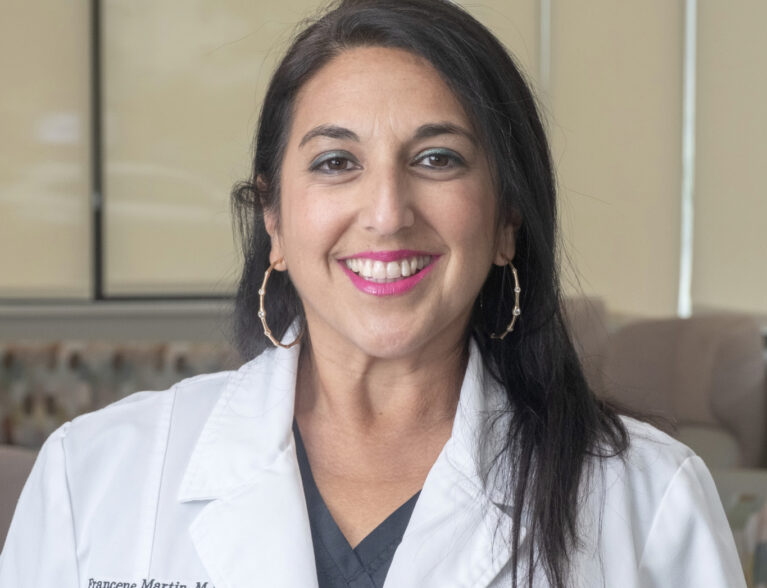
The pain from diverticular disease can be gut-wrenching. Just ask one of the nearly 130,000 people who are hospitalized with it in the United States each year or one of the 1.5 million hospital outpatients who show up holding their stomachs annually.
The National Institutes of Health reports diverticular disease is the eighth most common outpatient diagnosis in the United States.
Dr. Francene Martin, a board-certified gastroenterologist at Health First Medical Group, helps delineate the disease, explaining the difference between diverticulosis and diverticulitis, the two main types of diverticular disease.
“Diverticulosis is the presence of little pockets (diverticula) that form in the colon wall and increase as people age,” Martin says. “Diverticulitis occurs when those pockets get inflamed and swollen, which can result in them tearing or getting infected.” Dr. Martin notes that 60 percent of people over age 60 will form these pockets over time.
Harvard University Medical School’s newsletter explains that the diverticula protrude from the normally smooth muscular layer of the colon and tend to develop where the muscles are weakest, at the places where penetrating vessels cross through the muscles. In Western societies, the great majority develop where the colon is narrowest, in the sigmoid.
Diverticulitis may range in severity from mild to severe, and even life-threatening, depending on the size of the perforations or tears. A tiny pinhole perforation that seals itself quickly might cause a little pain and inflammation that can be treated with oral antibiotics. On the other end of the spectrum, a larger perforation that leaks air and stool into the surrounding abdominal cavity can make someone so sick that they need emergency surgery.
In rare cases, an infected diverticulum can split, spreading the infection into the lining of your abdomen, which causes peritonitis. Peritonitis can be life-threatening and requires immediate treatment with antibiotics.
Stanford University Lifestyle Medicine Newsletter recently published a paper stating that the vital connection between colorectal health and diet has never been more important, given the escalating increase of colorectal diseases in Western societies.
Dr. Martin concurs, stating that refined foods, red meat, low fiber and GMO-treated foods are among the culprits. Smoking, obesity and constipation also increase the risk.
Diverticulosis was identified in the U.S. in the early 1900s, coinciding with major technological advancements such as fertilizers, preservatives and large-scale farming, all of which caused significant changes in the American diet. Regular consumption of high-fiber, farm-fresh whole foods was replaced by processed foods lacking in essential nutrients.
Diets also became increasingly saturated with meats, fats, sugars and chemicals, replacing fruits, vegetables and whole grains.
“In the past, we told patients to avoid seeds, nuts, popcorn and similar foods because we thought they could get into the pockets and increase the risk of diverticulitis, but we know now that doesn’t happen,” adds Dr. Martin.
NYU Langone Health suggests lifestyle changes, in addition to diet as already discussed, that will help lessen symptoms of diverticulosis. They include:
- Physical activity – Activity helps keep your bowels moving. Try to fit light-to-moderate exercise like walking, running or yoga into your schedule daily.
- Tobacco cessation – Studies have found that smoking increases the risk of complications of diverticular disease, such as bleeding or diverticulitis.
- Proper hydration – Water, clear fluids and vegetable juice can help keep stool soft. If you’re taking fiber supplements, it’s important to drink plenty of water to prevent constipation.
Use of NSAIDS, aspirin, steroids and opioids can also increase your risk of developing diverticulosis.
Chronic or long-term inflammation has been linked to an ever-increasing number of medical conditions and is being examined to learn its connection to diverticular disease, says Dr. Martin.
Diverticular disease is evenly distributed in males and females. And while your genes and family history are not the leading cause of diverticulosis, as with most intestinal conditions, heredity does play a role in its development and severity. If close family members suffered from diverticulosis, your risk may be somewhat higher.
Most people don’t ever have symptoms from diverticulosis. If they do, it’s something mild like low-grade cramps.
Common symptoms of diverticulitis include distended abdomen, nausea and vomiting.
“It’s important to get treatment quickly if you have any of those symptoms or local persistent pain, chills or bleeding,” says Dr. Marten. “If the pain is severe, go to the ER immediately.”
Diagnosis of diverticular disease usually starts with a physical exam to check for abdominal tenderness. Follow-up tests can include:
- Blood tests to look for signs of infection, such as an increase in the number of disease-fighting immune cells called leukocytes.
- Abdominal CT scan, which is the most precise tool doctors use to diagnose diverticular disease. It provides cross-sectional, two- and three-dimensional images of structures in the GI tract and enables your doctor to identify any abnormalities in the colon and the area around it.
- Colonoscopy to examine the lining of the colon and rectum wall for any problems, including diverticula.
Dr. Martin says, “Once pockets are formed, they’ll never go away. Making healthy choices will help your long-term outlook.”
Dr. Francene Martin is a board-certified gastroenterologist. She earned a B.S. in Biology from the University of St. Thomas and a Doctor of Medicine degree at the University of Texas. She completed her fellowship in gastroenterology, as well as her residency and internship in Internal Medicine at the University of South Florida. She is board-certified in gastroenterology by the American Board of Internal Medicine. Her offices at Health First Medical Group are located at 5191 Babcock Street, Palm Bay: 321-434-3131; and 1223 Gateway Drive, Melbourne: 321-576-0647.



